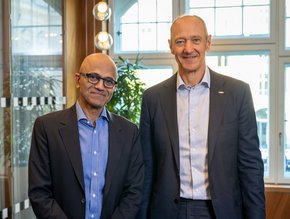True digital disruption requires a drift towards the cloud

Several large organisations are constrained by vast and complex IT systems. Steadily built up over the years, these structures now threaten the company as it tries to compete with more agile disruptors.
Technology was supposed to make our lives and businesses simpler. But it seems that over the past couple of decades, the exact opposite has happened.
Research firm Gartner have done a study on this matter. Its findings indicate that of the trillions of dollars spent annually on enterprise IT around the world, a staggering 80 percent is used for on system maintenance.
The research shows that IT backlogs are compounding annually at 10-20 percent. This means that more and more of your organisation’s IT budget is devoted to simply maintaining legacy systems.
Complex IT landscapes are proving to be increasingly unstable and inflexible in the modern digital economy. The common tension in large organisations is this: business is demanding rapid transformation, while IT is expected to respond – with just 20 percent of resources that remain after ‘keeping the lights on’ tasks are completed.
There is a silver lining to all of this. Fittingly, this glimmering chink of light can be found in the cloud.
Cloud services promise to simplify the world of enterprise technology, dramatically. By handing over large chunks of the ‘run the business’ (known as Mode 1) systems to managed loud providers, theoretically your organisation can devote increasing resources to Mode 2 – innovating, exploring and transforming your users’ digital experiences.
But to truly leverage the power of cloud computing, we need to go beyond simply migrating legacy systems to hosted cloud environments. In order to truly disrupt your business, you need to capitalise on those new opportunities presented by mobility, the Internet of Things, and Big Data.
Mobility
Our love-affair with mobile technology isn’t waning. The cloud has become pivotal in extending enterprise services to customers via easy-to-use mobile apps. In the same vein, staff need to be given a set of digital tools in order for them to collaborate easily and work remotely, thus increasing productivity.
Internet of Things
Embedded sensors and actuators are starting to appear in everything, from forklifts on production plants, to the t-shirts in our wardrobes. Every business sector is finding new ways to magically transform simple objects into ‘smart devices’. With data being continually streamed from these devices, the cloud is the only way of collecting and analysing these data streams.
Big Data
As we make the transition to digital business, detailed insights from our customers and users can be captured and fed into advanced modelling tools in the cloud. Business leaders are empowered with rich insights into the organisation’s operations, and into its customers’ experiences.
While it all sounds great on paper, taking advantage of cloud computing is certainly not simple.
CIOs have to navigate through a maze of challenges – not just in the technology itself, but also in shifting the culture, raising the ‘digital quotient’ of staff, and rethinking everything. This means reconsidering aspects such as policies around IT security, compliance and governance.
Taking the leap of faith into the cloud requires deep consultation with an experienced IT partner, beginning with a series of assessments. From there, you can start plotting your cloud roadmap to migrate existing services and design new ones.
Look for an IT partner that has a strong-track record with cloud-based digital transformations, deep knowledge about your business sector, as well as a commitment to cost-transparency.
Perhaps most importantly, your partner needs to be driven by the desire to deliver true business value and transformation. It’s only by demonstrating the results of your cloud journey that you’ll be able to justify continued investments in the cloud.
Ideally, the business value becomes starkly obvious to your organisation’s leadership – creating a virtuous effect where cloud migration efforts are intensified and transformation picks up increasing momentum.
By Collin Govender, VP Systems Integration at T-Systems South Africa
African Business Review’s May issue is now live.
Stay connected: follow @AfricaBizReview and @WedaeliABR on Twitter.
African Business Review is also on Facebook.






